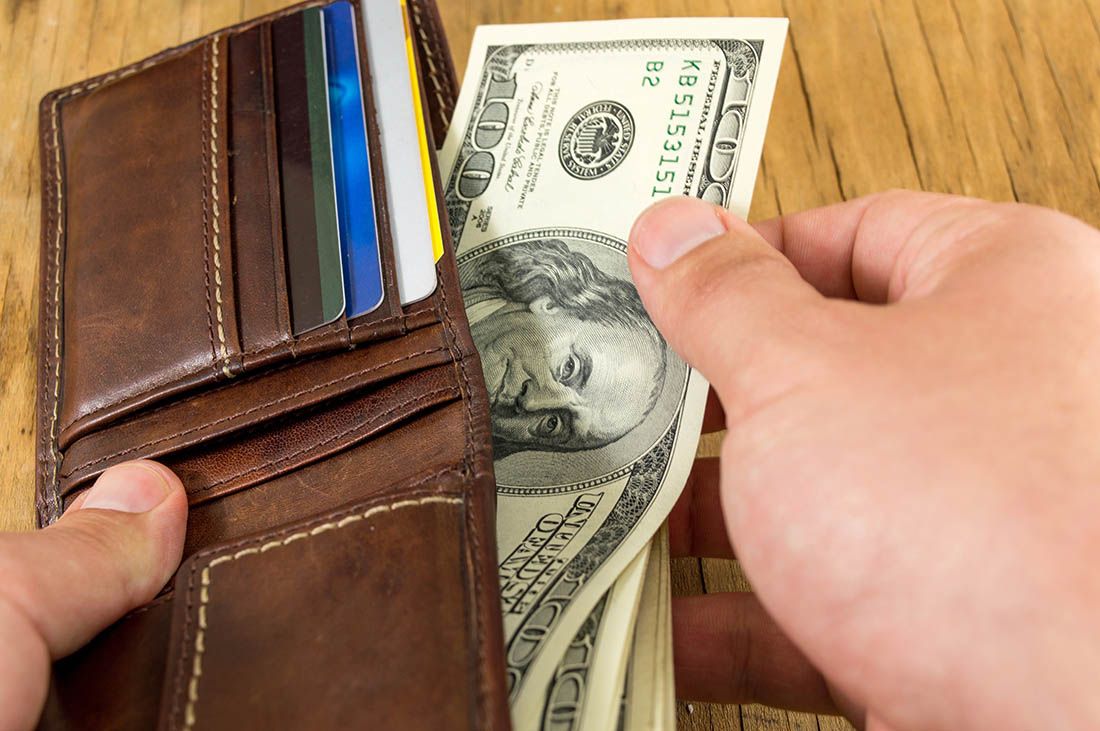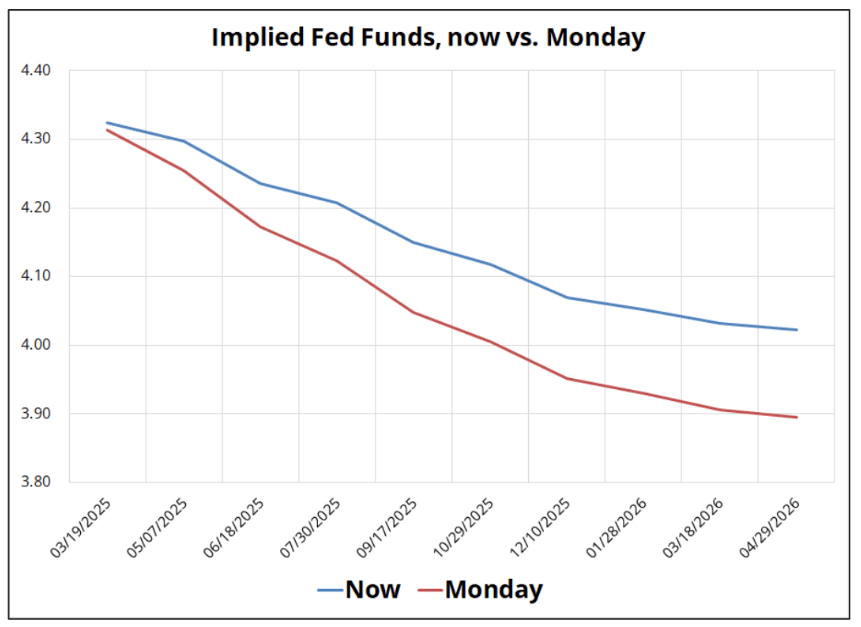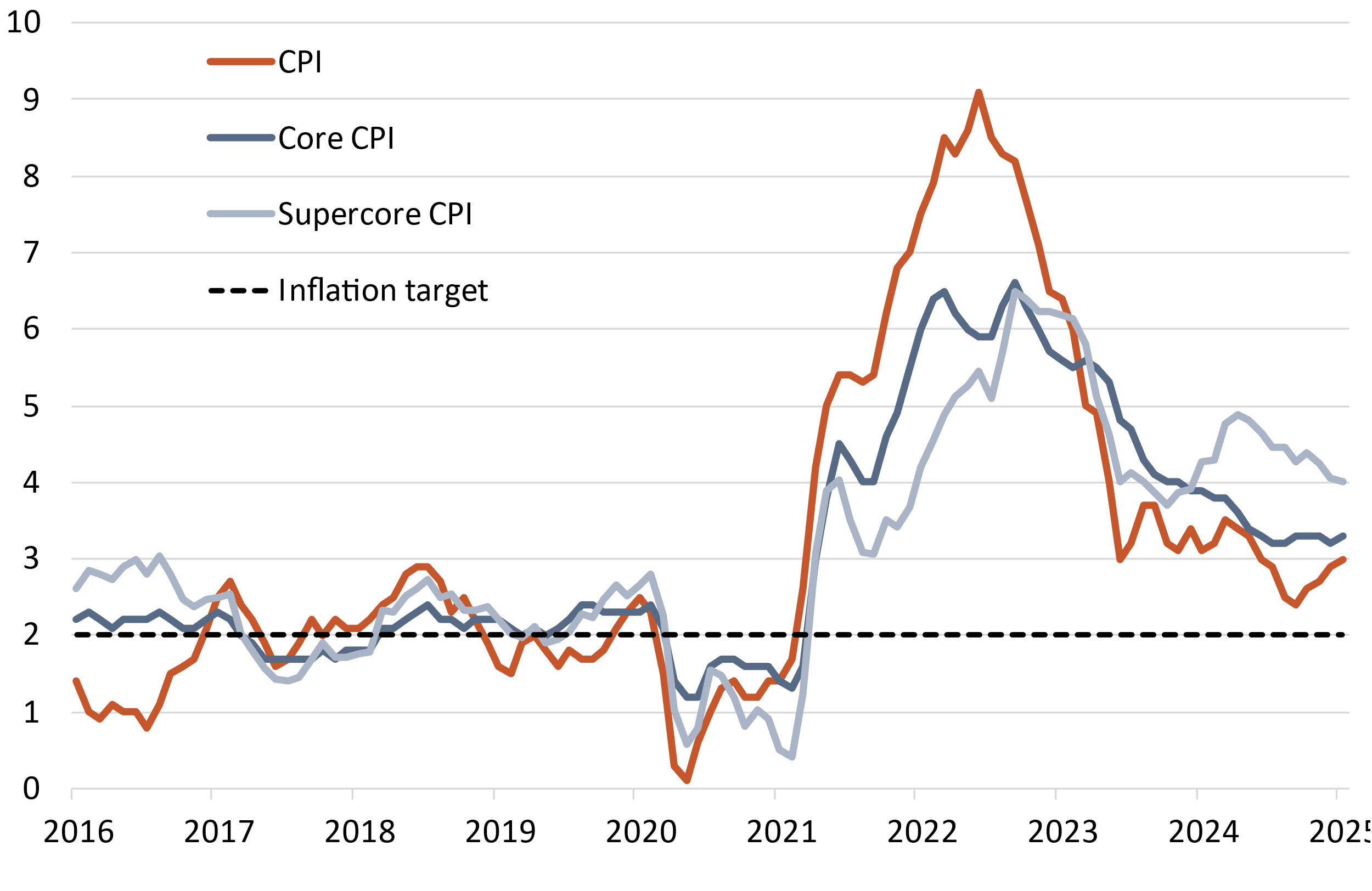
Image © Adobe Images
The Dollar rose after U.S. inflation strengthened across the board in January and diminished the odds of more than one Federal Reserve Rate cut in 2025.
GBPUSD went half a per cent lower on the day to 1.2390 after the BLS said inflation for all items rose 0.5% month-on-month in January from 0.4% in December, exceeding estimates for 0.3%.
The rise pushed up the year-on-year rate to 3.0% from 2.9%, putting a full percentage point above the Federal Reserve's 2.0% target.
"US CPI inflation landed well above expectations in January," says Kyle Chapman, FX Markets Analyst at Ballinger Group. "The dollar has surged while US equity futures have slumped as markets have pushed back the first fully priced rate cut to January 2026."
Core inflation, which strips out volatile items such as food and fuel, doubled to 0.4% m/m in January, which exceeded estimates for 0.3%. The annual core inflation rate rose to 3.3% from 3.2% and exceeded the consensus expectation for 3.2%.
Some analysts have been quick to explain away the rise in inflation as being due to seasonal effects, but a bump in seasonality was already baked into the forecasts that informed financial market pricing.
Investors are looking through any seasonal explanations and now see a higher trajectory for U.S. interest rates as a result of these data:
Image courtesy of Spectra Markets.
"You can explain away the CPI bump by looking at the weather, seasonality, tariff frontloading, and many other factors, but the Fed was already uncertain about the path of inflation and the balance of risks remains
tilted away from the elusive 2% target," says Brent Donnely, Founder of Spectra Markets.
The rise in inflation comes ahead of rising import tariffs, which economists say will add upside pressure to inflation, which will keep the Fed cautious.
Yet, President Donald Trump has again made it clear he wants the Fed to cut interest rates, even in the face of rising prices.
"Interest Rates should be lowered, something which would go hand in hand with upcoming Tariffs!!! Lets Rock and Roll, America!!!" said Trump on his Truth Social account on Tuesday.
This follows his January 30 comment to reporters that, "Jay Powell and the Fed failed to stop the problem they created with inflation."
On January 24 he told the World Economic Forum that the Fed should cut interest rates "a lot", adding that he would "let it be known" if he disagreed with Chair Jerome Powell's decisions.
For now, markets think Powell's hands are tied by inflation and that he won't be able to deliver the cuts Trump wants until inflation falls. Unfortunately, this might be later rather than sooner given Trump's fondness for tariffs.
Image courtesy of Berenberg.
Ongoing economic and political developments are entirely consistent with enduring U.S. Dollar strength.
Risks to the view is that the Fed errs on the 'dovish' side when making future policy decisions, meaning it ends up cutting further and faster over the coming months and years.
This means markets now need to second-guess the policy framework within the context of the activist U.S. President.
"Damage to the Fed's independence does not have to happen in a big bang. It can also take place at the margin and perhaps only produce a slightly looser monetary policy than would have been expected, ceteris paribus, with a normal US government," says Ulrich Leuchtmann, Head of FX and Commodity Research at Commerzbank.
"Perhaps one day it may be necessary to decide on one or two interest rate cuts that would otherwise not have been decided on. Or to postpone a rate hike," he explains.


